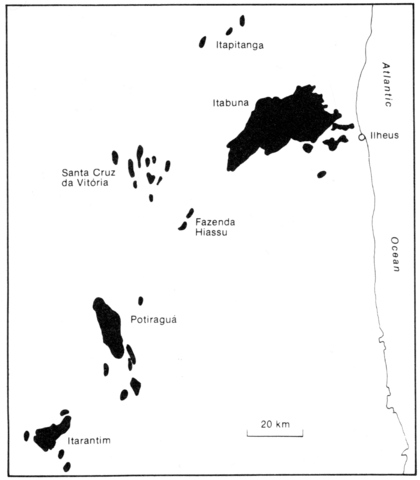stripes
Itabuna comprises a complex of syenite, diorite, monzodiorite and granite, with associated dykes, of approximately 18x40 km, intruding a broad range of Precambrian granulite facies rocks, but is overlapped on its eastern margin by Mesozoic sediments. Syenites, the most abundant rock type, include a range of pyroxene-, amphibole- and biotite-bearing types, the feldspars varying between perthite, microcline and sodic plagioclase. The pyroxenes vary from Ti-augite to aegirine-augite. The amphiboles are principally arfvedsonite but hornblende and katophorite also occur; the biotite is Ti-rich. The diorites and monzodiorites consist of oligoclase, perthite, Ti-biotite, hornblende and accessories. Granites are relatively minor and it is not clear from descriptions if they are peralkaline. A varied suite of dykes occur within the complex and cutting the surrounding granulites and include alkali basalts, (?)nephelinites, phonolites, trachytes and syenitic aplites. The trachytes contain biotite and a sodic amphibole. The so-called nephelinites comprise poikilitic kaersutite, nepheline, plagioclase, carbonate and opaques. The chemistry of the rocks, most of which are nepheline-normative and miaskitic, is described and discussed by Oliveira et al. (1980).
CORDANI, U., HALPERN, M. and BERENHOLE, M. 1974. Comentarois sobre as determinacoes geocronologicas do Folha Porto Alegre SH.22. In. Carta Geologica do Brasil ao miliuonesimo: texto explicativo. 70-88. Ministerio das Minas e Energia, Departamento Nacional da Producao Mineral, Brasilia.
OLIVEIRA, E.P., LIMA, M.I.C. and MARQUES, N.M.G. 1980. Macico sienitico de Itabuna, Bahia. Anais Congresso Brasileiro de Geologia, 31(4): 2149-62

